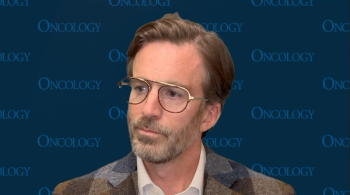
Data Show Increased Cancer-Related Mortality in Incarcerated Population
A collaboration between the Connecticut Departments of Health and Corrections and the COPPER Center aimed to improve outcomes among incarcerated patients.
A longitudinal study published in JAMA NetworkOpen sought to explore quality of care among patients who are incarcerated or recently released and compare their outcomes with those of the general population.1 One of the study authors, Cary P. Gross, MD, discussed the background for this study in an interview with CancerNetwork®.
Gross, professor of General Medicine and Epidemiology, as well as the founder and director of the Cancer Outcomes, Public Policy and Effectiveness Research (COPPER) Center at the Yale School of Medicine, discussed prior research that foregrounded the quality-of-care study as well as the current landscape of oncology care for this incarcerated or newly released population.
He began by highlighting a collaboration he is a member of, which include professionals from the Connecticut Department of Health, Department of Correction, and the COPPER Center at the Yale School of Medicine. Gross explained that this group is interested in improving outcomes among patients with cancer who are incarcerated, citing previous work showing increased risks to health-related outcomes for those who are incarcerated or newly released.
Findings from previous research conducted by this collective published in PLOS One showed that a higher risk of cancer mortality was observed among patients diagnosed during incarceration as well as during the first year following release.2 Based on these findings, Gross’s team focused on the quality of care among these patients to explore whether they were receiving guideline-concordant care.
Transcript:
I am part of a large team of collaborators and researchers that include individuals from the Connecticut Department of Health, Department of Correction, and Yale. Our group, as a whole, is interested in understanding and improving the care and outcomes of [patients] who are incarcerated, with a focus on cancer. Prior work has suggested—in general, not just cancer related—that there’s a period both during incarceration and also within the first couple of months after release when people are exposed to increased risks to their health. Sometimes, the transitions back into the community can be particularly challenging for people to get plugged into health care and the medical care that they need.
Other studies have suggested that during the time that people are incarcerated, it can be challenging to access health care. Our team’s prior work focused on overall mortality for patients who are diagnosed with cancer, and in those older studies, what we found is that patients diagnosed either while incarcerated or during the first year after release from incarceration had a higher risk of death than the general population of patients who have cancer but no history of incarceration. That led our team to dig a bit deeper into what might be the cause of these different outcomes. For this study, we focused on the quality of care people are receiving. After a diagnosis of cancer, are people getting the care that is recommended by guidelines?
References
- Oladeru OT, Richman IB, Aminawung JA, et al. Incarceration and quality of cancer care. JAMA Netw Open. 2025;8(10):e2537400. doi:10.1001/jamanetworkopen.2025.37400
- Oladeru OT, Aminawung JA, Lin HJ, et al. Incarceration status and cancer mortality: a population-based study. PLOS One. 2022;19(9):e0274703. doi:10.1371/journal.pone.0274703
Newsletter
Stay up to date on recent advances in the multidisciplinary approach to cancer.

















































































